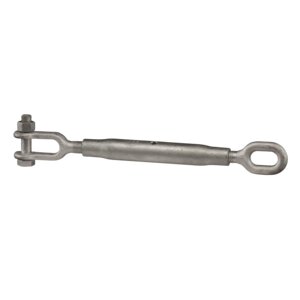In the dynamic landscape of industrial operations, the reliability and safety of lifting equipment play a pivotal role in ensuring smooth and secure operations. For any industry, maintaining and inspecting lifting hardware and accessories is not just a legal requirement but a fundamental aspect of operational excellence. This Know How article will delve into the critical importance of regular maintenance and inspection of these components.
The Significance of Maintenance and Inspection
- Safety First: Above all else, safety is the cornerstone of any lifting and rigging operation. Regular maintenance and inspection routines significantly mitigate the risk of accidents and equipment failures. In a high-stakes industry, adhering to safety protocols isn't just a matter of compliance but a moral responsibility to protect personnel and assets.
- Preserving Equipment Longevity: Routine maintenance isn't just about safety; it's also about protecting the longevity and efficiency of your lifting hardware. Consistent inspections help identify wear and tear, allowing for timely repairs or replacements preventing costly breakdowns and downtime.
Compliance with Regulations
Australian regulatory bodies have stringent guidelines concerning lifting and rigging equipment. Compliance with these regulations is non-negotiable. Keep updated with changes in legislation to ensure that your maintenance and inspection routines align with the latest standards.
Maintaining and inspecting lifting hardware and accessories is vital for lifting and rigging operations. It's not merely a compliance issue but a commitment to safety, efficiency, and the well-being of your workforce.

Best Practices for Maintenance and Inspection
- Scheduled Inspections: Establish a comprehensive schedule for inspections and maintenance. Regular checks should be carried out by trained personnel, adhering strictly to manufacturer guidelines and industry standards. Consider factors such as usage frequency and environmental conditions when planning these assessments. To book an inspection, simply contact us.
- Thorough Examination: Inspections must cover all aspects of lifting hardware and accessories. This includes visual checks for visible damages, corrosion, cracks, or deformities. Additionally, functional tests should be conducted to ensure proper working conditions.
- Documentation: Maintain meticulous records of all inspections and maintenance activities. Detailed documentation ensures compliance and serves as a reference for tracking equipment history and identifying patterns in wear and tear. At CERTEX Lifting, we use an online management portal to keep track of your lifting, rigging and height safety assets.
- Training and Awareness: Invest in continuous training for your team members handling lifting equipment. Awareness of best practices and safety protocols is crucial in maintaining a proactive approach towards equipment care.
A proactive approach towards maintenance and inspection is not just a necessity but a strategic investment in ensuring seamless and secure operations. Remember, a well-maintained and regularly inspected lifting setup safeguards against accidents and enhances your equipment's productivity, reliability, and longevity, ultimately contributing to a safer and more efficient workplace.







